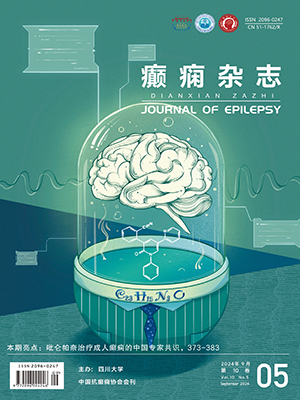| 1. |
Aguech A, Sfaihi L, Alila-Fersi O, et al. A novel homozygous PIGO mutation associated with severe infantile epileptic encephalopathy, profound developmental delay and psychomotor retardation: structural and 3D modelling investigations and genotype-phenotype correlation. Metab Brain Dis, 2023, 38(8): 2665-2678.
|
| 2. |
Tanigawa J, Mimatsu H, Mizuno S, et al. Phenotype-genotype correlations of PIGO deficiency with variable phenotypes from infantile lethality to mild learning difficulties. Hum Mutat, 2017, 38(7): 805-815.
|
| 3. |
Krawitz PM, Murakami Y, Hecht J, et al. Mutations in PIGO, a member of the GPI-anchor-synthesis pathway, cause hyperphosphatasia with mental retardation. Am J Hum Genet, 2012, 91(1): 146-151.
|
| 4. |
Zehavi Y, von Renesse A, Daniel-Spiegel E, et al. A homozygous PIGO mutation associated with severe infantile epileptic encephalopathy and corpus callosum hypoplasia, but normal alkaline phosphatase levels. Metab Brain Dis, 2017, 32(6): 2131-2137.
|
| 5. |
Holtz AM, Harrington AW, McNamara ER, et al. Expanding the phenotypic spectrum of Mabry Syndrome with novel PIGO gene variants associated with hyperphosphatasia, intractable epilepsy, and complex gastrointestinal and urogenital malformations. Eur J Med Genet, 2020, 63(4): 103802.
|
| 6. |
Kuki I, Takahashi Y, Okazaki S, et al. Vitamin B6-responsive epilepsy due to inherited GPI deficiency. Neurology, 2013, 81(16): 1467-1469.
|
| 7. |
Morren MA, Jaeken J, Visser G, et al. PIGO deficiency: palmoplantar keratoderma and novel mutations. Orphanet J Rare Dis, 2017, 12(1): 101.
|
| 8. |
Nakamura K, Osaka H, Murakami Y, et al. PIGO mutations in intractable epilepsy and severe developmental delay with mild elevation of alkaline phosphatase levels. Epilepsia, 2014, 55(2): e13-17.
|
| 9. |
Xue J, Li H, Zhang Y, et al. Clinical and genetic analysis of two Chinese infants with Mabry syndrome. Brain Dev, 2016, 38(9): 807-818.
|
| 10. |
Starosta RT, Kerashvili N, Pruitt C, et al. PIGO-CDG: A case study with a new genotype, expansion of the phenotype, literature review, and nosological considerations. JIMD Rep, 2023, 64(6): 424-433.
|
| 11. |
Pagnamenta AT, Murakami Y, Taylor JM, et al. Analysis of exome data for 4293 trios suggests GPI-anchor biogenesis defects are a rare cause of developmental disorders. Eur J Hum Genet, 2017, 25(6): 669-679.
|
| 12. |
Tanigawa J, Nabatame S, Tominaga K, et al. High-dose pyridoxine treatment for inherited glycosylphosphatidylinositol deficiency. Brain Dev, 2021, 43(6): 680-687.
|
| 13. |
Bayat A, Aledo-Serrano A, Gil-Nagel A, et al. Pyridoxine or pyridoxal-5-phosphate treatment for seizures in glycosylphosphatidylinositol deficiency: A cohort study. Dev Med Child Neurol, 2022, 64(6): 789-798.
|
| 14. |
Kuwayama R, Suzuki K, Nakamura J, et al. Establishment of mouse model of inherited PIGO deficiency and therapeutic potential of AAV-based gene therapy. Nat Commun, 2022, 13(1): 3107.
|




